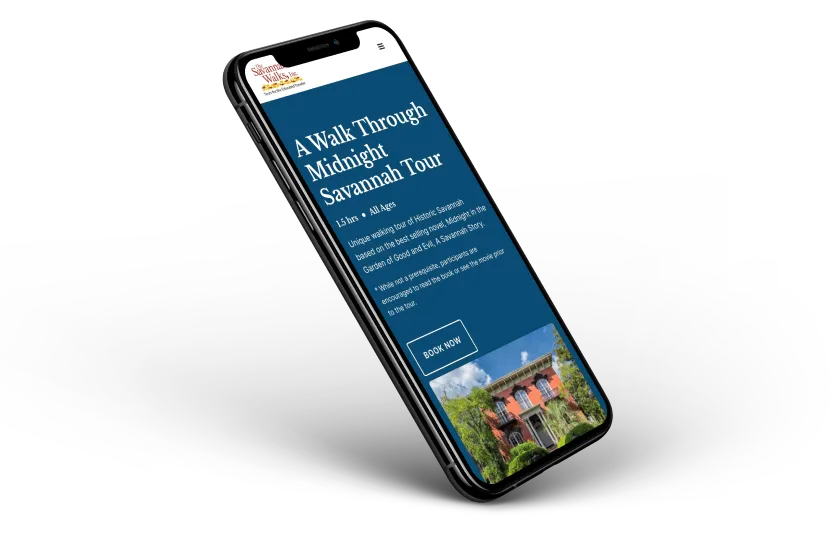Web Design
How to Write Website Content that Converts

The Role of Content in Web Design
A website acts as the front line of communication between a business and its audience. At the heart of any effective website is its content.
Content is not just about what you say; it's about how you say it.
In web design, clarity of content is paramount. It’s not merely about aesthetics or functionality; it’s about ensuring that your message is delivered effectively and efficiently.
In this article we will explore why clear content is critical and how to achieve it, ensuring that your website not only looks good but communicates clearly and persuasively.
Why Content is King in Web Design
Clear, concise, and engaging content does more than just inform — it transforms the user experience.
It's the difference between a visitor who navigates your site with ease and one who leaves in frustration.
Imagine content as a guide, leading users through your website on a journey. Good content will provide them with the information they need and encourage interaction with your products or services.
The clarity of your website’s content directly impacts how users perceive and interact with your site.
- Bad content equals low engagement.
- Good content equals high engagement.
Not just engagement, but action. If you want to increase conversions and gain more sales or leads, you need to make sure your content is good.
You Must Find a Balance Between Design and Content
A common pitfall in web design is the overemphasis on aesthetics at the expense of content.
While a visually stunning website can capture attention, it's the clarity and quality of the content that maintains interest and drives action.
The key is to find a balance where design elements complement rather than overshadow the content.
This means ensuring that the website's visual elements support and guide users to your content in an easily digestible format.
When design and content work in tandem, they create a cohesive and effective user experience that not only pleases the eye but also clearly communicates your message.
For a good example of this, see our article on Visual Hierarchy in Web Design
Key Elements of Clear Web Design Content
1. Legible Fonts
The choice of font plays a crucial role in content clarity. Legible fonts not only make your content readable but also affect the tone and feel of your message.
Stick to fonts that are easy on the eyes, especially for longer blocks of text. Avoid overly decorative fonts that might distract or make reading difficult.
2. Succinct Messaging
On the web, attention spans are short. Your content should be concise and to the point.
Use clear and straightforward language to convey your message effectively.
Break down complex ideas into digestible chunks, and avoid unnecessary jargon that might confuse your audience.
3. Compelling Calls-to-Action
A well-crafted call-to-action (CTA) is essential for guiding users towards the next step, whether it's making a purchase, signing up for a newsletter, or contacting you for more information.
Your CTAs should be clear, persuasive, and strategically placed to draw attention and encourage interaction.
Practical Tips for Content-First Design
1. Prioritize Content Hierarchy
Organize for Impact: Structure your content in a hierarchy that guides the reader through your message.
Use headings and subheadings to break up text and highlight key points.
This organization not only makes the content more scannable but also helps in emphasizing the most critical information first.
2. Use Visual Elements Wisely
Aid, Don’t Overwhelm: Incorporate visual elements such as images, videos, and infographics to complement your text, not replace it.
These should serve to break up text, illustrate points, and add visual interest, but they shouldn't distract from the main message.
3. Keep it Accessible
Design for All Users: Ensure that your content is accessible to all users, including those with disabilities.
This includes using alt text for images, ensuring sufficient color contrast, and providing transcripts for videos.
Accessible content is not only inclusive but also tends to be clearer and more concise.
4. Test Your Content
Feedback is Key: Regularly test your content with real users. Gather feedback on its clarity and effectiveness.
Use this input to make iterative improvements. A/B testing can be invaluable in understanding what resonates best with your audience.
5. Continuous Improvement
Adapt and Evolve: Web content should not be static. Continuously review and update your content to ensure it remains relevant, clear, and engaging.
This includes revising outdated information, optimizing for current SEO best practices, and adjusting the tone and style to match your evolving brand identity.
Conclusion
Web design is a balancing act between aesthetic appeal and content clarity.
Remember, a website is more than just a digital façade; it's a communication tool.
By prioritizing clear, concise, and engaging content, you can ensure that your website not only captures attention but also effectively communicates your message and drives user action.
Integrating these principles and practical tips into your web design process will help in creating websites that are not just visually stunning, but also clear in their purpose and messaging.
In the end, clear content is the cornerstone of a successful website, turning visitors into engaged users and, ultimately, customers.
End to End Webflow Design and Development Services
From Web Design and SEO Optimization to Photography and Brand Strategy, we offer a range of services to cover all your digital marketing needs.

Webflow Web Design
We design custom Webflow websites that are unique, SEO optimized, and designed to convert.
Webflow Maintenance
Gain peace of mind knowing that a Webflow Professional Partner is maintaining your website.

Claim Your Design Spot Today
We dedicate our full attention and expertise to a select few projects each month, ensuring personalized service and results.






